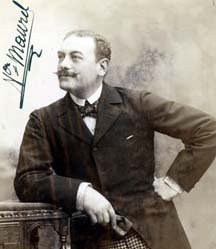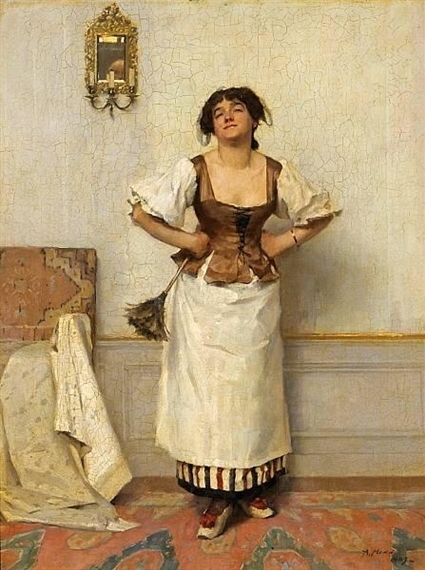|
Colombina
Columbina (in Italian Colombina, meaning "little dove"; in French and English Colombine) is a stock character in the ''commedia dell'arte''. She is Harlequin's mistress, a comic servant playing the tricky slave type, and wife of Pierrot. Rudlin and Crick use the Italian spelling Colombina in ''Commedia dell'arte: A Handbook for Troupes''. History The role of the female servant was originally that of an entr'acte dancer. Women were not allowed to be part of the story that was being played out on stage, but they were allowed to have a dance in-between the action. Eventually these women became the busom and gossipy servants of characters that were already allowed on stage, and then, later, the counterparts to the Zanni characters. She was very down to earth and could always see the situation for what it actually was. She was also sometimes portrayed as a prostitute. She was very infrequently without something to say to or about someone. She is dressed in a very short ragged and ... [...More Info...] [...Related Items...] OR: [Wikipedia] [Google] [Baidu] |
Pagliacci
''Pagliacci'' (; literal translation, "Clowns") is an Italian opera in a prologue and two acts, with music and libretto by Ruggero Leoncavallo. The opera tells the tale of Canio, actor and leader of a commedia dell'arte theatrical company, who murders his wife Nedda and her lover Silvio on stage during a performance. ''Pagliacci'' premiered at the Teatro Dal Verme in Milan on 21 May 1892, conducted by Arturo Toscanini, with Adelina Stehle as Nedda, Fiorello Giraud as Canio, Victor Maurel as Tonio, and Mario Ancona as Silvio. Soon after its Italian premiere, the opera played in London (with Nellie Melba as Nedda) and in New York (on 15 June 1893, with Agostino Montegriffo as Canio). ''Pagliacci'' is the composer's only opera that is still widely performed. ''Pagliacci'' is often staged with ''Cavalleria rusticana'' by Pietro Mascagni, a double bill known colloquially as "Cav and Pag". Origin and disputes Leoncavallo was a little-known composer when Pietro Mascagni's ''Cavalleria ... [...More Info...] [...Related Items...] OR: [Wikipedia] [Google] [Baidu] |
Caterina Biancolelli
Caterina Biancolelli (1665–1716) was an Italian actress in the ''commedia dell'arte'' style of theater. She was one of the earliest actresses to play the role of Colombina, and one of the most famous. Biancolelli was the daughter of actors Domenico Biancolelli (1636-1688), who was famous for playing Harlequin, and Orsola Cortesi (1637-1718), who played an innamorata named Eularia. Her grandmother was the actress Isabella Franchini Biancolelli, who had also played Colombina. Caterina Biancolelli and her family were members of the Comédie-Italienne Comédie-Italienne or Théâtre-Italien are French names which have been used to refer to Italian-language theatre and opera when performed in France. The earliest recorded visits by Italian players were commedia dell'arte companies employed b ... troupe ''Ancienne Troupe de la Comedia Italienne'', which performed in France. Caterina Biancolelli began playing Colombina in her family's troupe in 1683. In that same year, she and ... [...More Info...] [...Related Items...] OR: [Wikipedia] [Google] [Baidu] |
Commedia Dell'arte
(; ; ) was an early form of professional theatre, originating from Italian theatre, that was popular throughout Europe between the 16th and 18th centuries. It was formerly called Italian comedy in English and is also known as , , and . Characterized by masked "types", was responsible for the rise of actresses such as Isabella Andreini and improvised performances based on sketches or scenarios. A , such as ''The Tooth Puller'', is both scripted and improvised. Characters' entrances and exits are scripted. A special characteristic of is the , a joke or "something foolish or witty", usually well known to the performers and to some extent a scripted routine. Another characteristic of is pantomime, which is mostly used by the character Arlecchino, now better known as Harlequin. The characters of the usually represent fixed social types and stock characters, such as foolish old men, devious servants, or military officers full of false bravado. The characters are exaggerated " ... [...More Info...] [...Related Items...] OR: [Wikipedia] [Google] [Baidu] |
Soubrette
A soubrette is a type of operatic soprano voice ''fach'', often cast as a female stock character in opera and theatre. The term arrived in English from Provençal via French, and means "conceited" or "coy". Theatre In theatre, a soubrette is a comedy character who is vain and girlish, mischievous, lighthearted, coquettish and gossipy—often a chambermaid or confidante of the ingénue. She often displays a flirtatious or even sexually aggressive nature. The soubrette appeared in commedia dell'arte scenarios, often in the role of Columbina, where the actress would provide the details of her behavior and dialogue. From there, she moved to the works of Molière, which were influenced by the Commedia; the role of Dorine in ''Tartuffe'' (1664) fits the description. A famous example, though a hundred years later, is Suzanne in Beaumarchais' ''Le Mariage de Figaro'' (1784). Opera In classical music and opera, the term ''soubrette'' refers to both a soprano voice type and a type of opera ... [...More Info...] [...Related Items...] OR: [Wikipedia] [Google] [Baidu] |
Harlequinade
''Harlequinade'' is a British comic theatrical genre, defined by the ''Oxford English Dictionary'' as "that part of a pantomime in which the harlequin and clown play the principal parts". It developed in England between the 17th and mid-19th centuries. It was originally a slapstick adaptation or variant of the Commedia dell'arte, which originated in Italy and reached its apogee there in the 16th and 17th centuries. The story of the Harlequinade revolves around a comic incident in the lives of its five main characters: Harlequin, who loves Columbine; Columbine's greedy and foolish father Pantaloon (evolved from the character Pantalone), who tries to separate the lovers in league with the mischievous Clown; and the servant, Pierrot, usually involving chaotic chase scenes with a bumbling policeman. Originally a mime (silent) act with music and stylised dance, the harlequinade later employed some dialogue, but it remained primarily a visual spectacle. Early in its development, it ach ... [...More Info...] [...Related Items...] OR: [Wikipedia] [Google] [Baidu] |
Fictional Tricksters
Fiction is any creative work, chiefly any narrative work, portraying individuals, events, or places that are imaginary, or in ways that are imaginary. Fictional portrayals are thus inconsistent with history, fact, or plausibility. In a traditional narrow sense, "fiction" refers to written narratives in prose often referring specifically to novels, novellas, and short stories. More broadly, however, fiction encompasses imaginary narratives expressed in any medium, including not just writings but also live theatrical performances, films, television programs, radio dramas, comics, role-playing games, and video games. Definition Typically, the fictionality of a work is publicly marketed and so the audience expects the work to deviate in some ways from the real world rather than presenting, for instance, only factually accurate portrayals or characters who are actual people. Because fiction is generally understood to not fully adhere to the real world, the themes and context of ... [...More Info...] [...Related Items...] OR: [Wikipedia] [Google] [Baidu] |
Female Stock Characters
Female ( symbol: ♀) is the sex of an organism that produces the large non-motile ova (egg cells), the type of gamete (sex cell) that fuses with the male gamete during sexual reproduction. A female has larger gametes than a male. Females and males are results of the anisogamous reproduction system, wherein gametes are of different sizes, unlike isogamy where they are the same size. The exact mechanism of female gamete evolution remains unknown. In species that have males and females, sex-determination may be based on either sex chromosomes, or environmental conditions. Most female mammals, including female humans, have two X chromosomes. Female characteristics vary between different species with some species having pronounced secondary female sex characteristics, such as the presence of pronounced mammary glands in mammals. In humans, the word ''female'' can also be used to refer to gender in the social sense of gender role or gender identity. Etymology and usage T ... [...More Info...] [...Related Items...] OR: [Wikipedia] [Google] [Baidu] |
Richard Geiger
Richard Geiger (29 June 1870 – 9 February 1945) was an Austrian painter. Initially he worked for a Hungarian weekly magazine. By the 1920s, he worked illustrating books, bookplates and posters. His paintings included portraits, nudes, genre paintings, and mythological scenes, but he was known for his illustrations, especially his carnival motifs. Background Geiger was born in Vienna, into a Hungarian Jewish family. His parents were Antal Geiger and Jozefin Wahringer. He first attended a drawing school and then studied at the Academy of Fine Arts Vienna, where he studied under Christian Griepenkerl and August Eisenmenger. He studied sculpture with Fritz Klimsch at the Academy of Arts in Berlin. There he took part in the exhibitions of the Academy with his portrait busts and sculptures. In Paris he studied at the Julian Academy and worked in the studio of François Flameng. While at the Julian Academy, he focused on painting scenes from the life of the clochards. From 1893 G ... [...More Info...] [...Related Items...] OR: [Wikipedia] [Google] [Baidu] |
Pierre-Antoine Quillard
Pierre-Antoine Quillard, (; c. 1700 – 25 November 1733) was a French portrait painter and engraver who worked in Portugal. Biography Quillard's father was a woodworker. He began to study art at a very early age, possibly with Antoine Watteau, or at least some of his close associates.Brief biography @ the Thyssen-Bornemisza Museum. When he was ten or eleven, his paintings were deemed such perfect copies of Watteau's style that Cardinal Fleury presented some to King Louis XV of France, Louis XV, who granted Quillard a pension. After twice failing to win the Prix de Rome, in 1724 and 1725, and despite having won second place both times, he accepted an offer of work from Charles Frédéric de Merveilleux (d. 1749), a Swiss doctor who was attached to the Royal Court in Lisbon. The position involved drawing illustrations to ac ... [...More Info...] [...Related Items...] OR: [Wikipedia] [Google] [Baidu] |
Molière
Jean-Baptiste Poquelin (, ; 15 January 1622 (baptised) – 17 February 1673), known by his stage name Molière (, , ), was a French playwright, actor, and poet, widely regarded as one of the greatest writers in the French language and world literature. His extant works include comedies, farces, tragicomedies, comédie-ballets, and more. His plays have been translated into every major living language and are performed at the Comédie-Française more often than those of any other playwright today. His influence is such that the French language is often referred to as the "language of Molière". Born into a prosperous family and having studied at the Collège de Clermont (now Lycée Louis-le-Grand), Molière was well suited to begin a life in the theatre. Thirteen years as an itinerant actor helped him polish his comedic abilities while he began writing, combining Commedia dell'arte elements with the more refined French comedy. Through the patronage of aristocrats including ... [...More Info...] [...Related Items...] OR: [Wikipedia] [Google] [Baidu] |
Ruggero Leoncavallo
Ruggero (or Ruggiero) Leoncavallo ( , , ; 23 April 18579 August 1919) was an Italian opera composer and librettist. Although he produced numerous operas and other songs throughout his career it is his opera '' Pagliacci'' (1892) that remained his lasting contribution, despite attempts to escape the shadow of his greatest success. Today he remains largely known for ''Pagliacci'', one of the most popular and frequently performed works in the opera repertory. His other compositions include the song "Mattinata", popularized by Enrico Caruso, and the symphonic poem ''La Nuit de mai''. Biography The son of Vincenzo Leoncavallo, a police magistrate and judge, Leoncavallo was born in Naples on 23 April 1857. As a child, Leoncavallo moved with his father to the town of Montalto Uffugo in Calabria, where he lived during his adolescence. He later returned to Naples and was educated at the city's San Pietro a Majella Conservatory and later the University of Bologna studying literature ... [...More Info...] [...Related Items...] OR: [Wikipedia] [Google] [Baidu] |








.jpg)